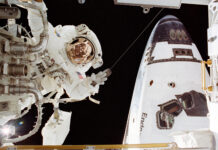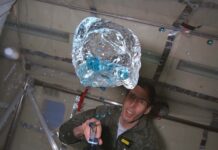Galactic Wonders: Comparing the Observations of Hubble and Webb Telescopes
The cosmos, with its vast expanse and myriad mysteries, has always fascinated humanity. Our quest to understand the universe has been greatly aided by advances in technology, particularly in the realm of space observation. Two of the most significant tools in this pursuit are the Hubble Space Telescope and the James Webb Space Telescope. Both telescopes have recently provided stunning images of the same celestial objects, allowing us to compare their capabilities and the insights they offer.
A Tale of Two Telescopes
The Hubble Space Telescope, launched in 1990, has been a cornerstone of astronomical observation. It operates primarily in the ultraviolet and visible spectrums, allowing it to capture detailed images of galaxies, nebulae, and other celestial phenomena. Over the years, Hubble has provided us with breathtaking views of the universe, expanding our understanding of space.
On the other hand, the James Webb Space Telescope (Webb) is a newer addition to our astronomical toolkit. Launched in December 2021, Webb is designed to observe the universe in the infrared spectrum. This capability allows it to capture images of objects that are often obscured by dust and gas in the cosmos, providing a different perspective from what Hubble can offer.
Observing the Cosmic Dance
Recently, both telescopes have focused their lenses on a captivating pair of spiral galaxies: IC 2163 and NGC 2207. These galaxies are located about 114 million light-years away from Earth and are in the process of interacting with each other. This cosmic dance is a fascinating subject of study, as such interactions can lead to the formation of new stars and other celestial phenomena.
In the Hubble image, IC 2163 and NGC 2207 are seen overlapping at a diagonal angle. The cores of the galaxies appear white, with the overall hue being a warm orange. The spiral arms of the galaxies are bright blue, intertwined with dark brown dust lanes. The background of space is dotted with tiny galaxies and a few stars.
Webb’s Infrared Vision
Contrastingly, the image captured by the Webb telescope presents these galaxies in a new light. The cores shine bright white, with the spiral arms also appearing white but speckled with pink dots. This difference is attributed to Webb’s ability to capture infrared light, revealing features that are not visible in the ultraviolet and visible spectrums.
Infrared observations are particularly useful for studying regions of space that are obscured by dust, such as star-forming areas. By peering through these obstructions, Webb can provide insights into the processes driving star formation and the evolution of galaxies.
The Importance of Different Perspectives
The ability to observe the same objects through different spectrums is invaluable for astronomers. Each telescope provides unique data, and when combined, these observations offer a more comprehensive understanding of celestial phenomena. For instance, Hubble’s images might show the visible structure and color of a galaxy, while Webb’s images reveal details hidden behind cosmic dust.
This complementary approach is akin to viewing an object through different filters, each revealing distinct aspects that contribute to a fuller picture. Scientists can analyze these images to study the composition, temperature, and movement within galaxies, enhancing our understanding of the universe’s workings.
Beyond the Visual Spectacle
The images from Hubble and Webb are not just visually stunning; they are a testament to human ingenuity and our relentless pursuit of knowledge. They remind us of the incredible achievements in space exploration and the technological advancements that make such observations possible.
Moreover, these telescopic views have practical implications. By studying galaxy interactions, scientists can gain insights into the processes that lead to star formation, galaxy evolution, and even the potential for life elsewhere in the universe. Understanding these cosmic events can shed light on the history of our own galaxy and the forces that have shaped it.
A Future of Discovery
As we look to the future, the continued collaboration between different observational tools promises to unlock even more secrets of the cosmos. The Webb telescope, with its advanced capabilities, is expected to delve deeper into the origins of galaxies, stars, and planetary systems. Its ability to peer into the early universe could provide clues about the Big Bang and the formation of the first galaxies.
Meanwhile, Hubble’s ongoing mission continues to offer valuable data, complementing Webb’s findings and enriching our understanding of the universe’s complexity. Together, these telescopes represent the pinnacle of human achievement in space exploration, providing a window into the past, present, and future of the cosmos.
In Conclusion
The side-by-side comparison of images from the Hubble and Webb telescopes is more than just a display of technological prowess. It is a celebration of humanity’s curiosity and determination to explore the unknown. As we gaze at these images of distant galaxies, we are reminded of our place in the universe and the boundless possibilities that lie ahead.
For those interested in exploring the images and learning more about the ongoing research, you can visit the official NASA science website. There, you will find a wealth of information about the telescopes, their missions, and the latest discoveries they have made. As we continue to push the boundaries of space exploration, the insights gained from these stellar observatories will undoubtedly inspire future generations of astronomers and space enthusiasts alike.
For more Information, Refer to this article.
































